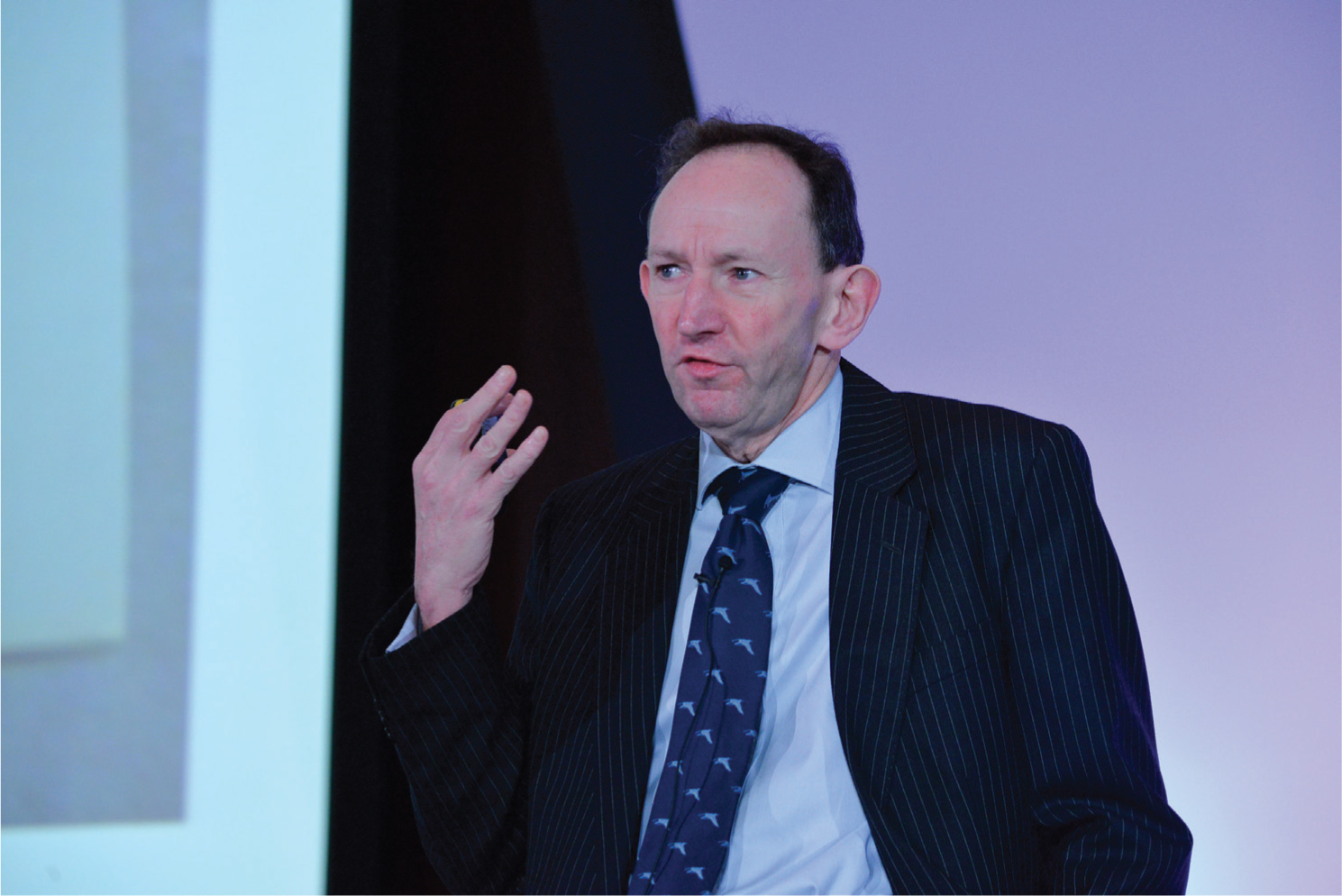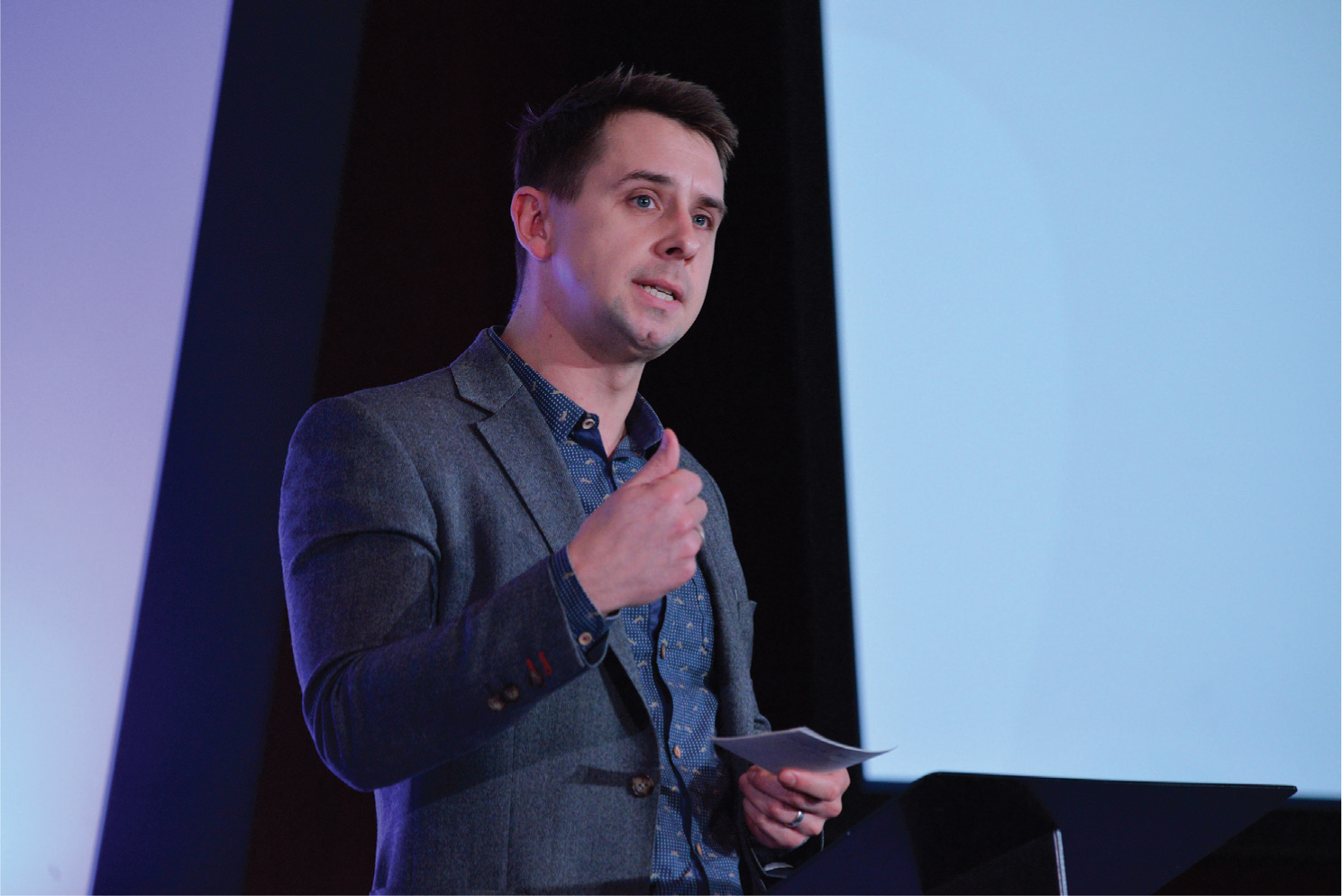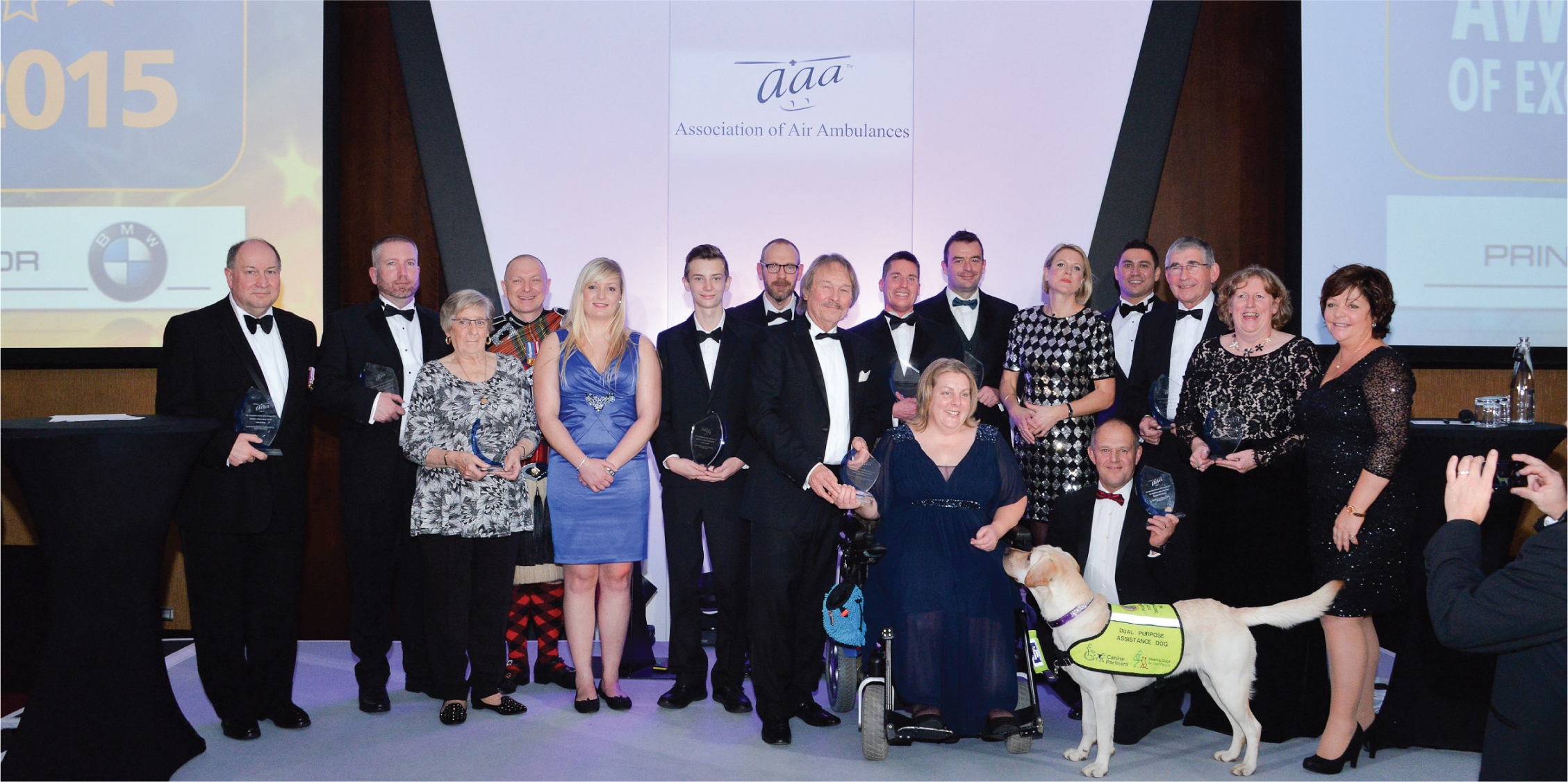The Association of Air Ambulances (AAA) National Conference returned for another year to the Millennium Gloucester Hotel in Kensington, London to explore the issues affecting air ambulance charities. Held on Monday 16 November, the day's talks followed a theme of the ‘Here and Now’, and discussed what air ambulance charities are doing, the advances and steps being taken to take patient care to the next level, and considered the opportunities for clinical, operational and charitable excellence to flourish.
In a similar vein to previous years, the agenda came under three main categories: clinical, operations and charity. An extended workshop programme was introduced and lectures held across two theatres.

Working together in pre-hospital care
Following a brief welcome from AAA national director, Clive Dickin, Hannah Sebright, AAA vice chair, outlined the challenges facing the air ambulance sector. The keynote presentation was then given by Dr Colville Laird, chair of the Faculty of Pre-Hospital Care, who explained how he was tasked by the organisers of the conference to deliver a ‘controversial’ talk. Coming under the enigmatic title of ‘Air Ambulances, Budgerigars and Formula One’, Laird highlighted the importance of working together in pre-hospital care, as the result is better than the sum of its parts. He emphasised that air ambulances are only part of a very big system in pre-hospital care and that the Faculty of Pre-Hospital Care is encouraging interaction between all levels of care provider.
Dr Nick Crombie, clinical lead for Midlands Air Ambulance, then discussed some of the possibilities of pre-hospital research. Crombie explained how the current evidence base in the pre-hospital environment is weak and that we need organisational systems to enable research. He noted that because a high proportion of current research is hospital driven, it is often extrapolated into the pre-hospital setting, or based on anecdote.
After a short break for coffee, Dr Dindi Gill, consultant in emergency medicine, spoke on Wales Air Ambulance and the setting up of the Emergency Medical Retrieval and Transfer Service (EMRTS). Launched in April 2015, the service aims to stabilise and transfer the most critically-ill and injured patients to hospital by road and air, ensuring they receive the best life-saving care.
Erica Ley and Ryan Jones of Essex and Herts Air Ambulance Trust then gave a talk on the use of positive end-expiratory pressure (PEEP) in patients with traumatic head injury, considering whether it improves survival. Presenting the results of a number of studies, they explained how intracranial pressure tends not to increase with PEEP and that there is contradictory evidence regarding appropriate levels of PEEP. A decrease in mean arterial pressure is a uniform finding and PaCO2 levels can increase if alveoli are hyper-inflated instead of recruited. However, they mentioned that they could not find any data on the use of PEEP for traumatic brain injury in the pre-hospital environment, and so pointed out that further studies are needed.
The final talk before lunch was given by Fraser MacKay of FEC Heliports, outlining the good, the bad and the ugly of helipads. According to MacKay, elevated helipads represent the good of helipads, as they offer the greatest choice of obstacle-free helicopter airways. The bad refers to helipads that are built at ground level. These are less expensive than elevated helipads, but take up more space. The ugly was explained as non-conventional operating sites with little or no marking, limited visual clues and no lighting.
‘If not you then who? If not now then when?’
After lunch, Olympian and Commonwealth Great Britain swimmer, Adam Whitehead, gave an inspiring talk on his involvement with the Dame Kelly Holmes Trust, which supports athletes as they transition from sport, and uses their unique skills to transform the lives of disadvantaged young people through mentoring programmes. Set up in 2008, the charity aimed to reach out to 200 000 young people by 2016; however, it has already reached 250 000. Whitehead recalled his own story, starting out as an amateur swimmer at school to representing his country at the Olympics. He highlighted his personal mantra that got him to the top of his sport, where he asked himself: ‘If not you then who? If not now then when?’ He explained that these questions are transferable to any walk of life, including those involved in the pre-hospital care of patients.

Dr Andy Smith, executive medical director of swasFT, then discussed the confusing world of clinical governance. Carson aimed to answer the question of where the responsibility lies when things go wrong during the care of patients. He highlighted that examples of what could go wrong include clinical errors, harm to staff members while on an incident, or damage to property.
Frank Chege, patient liaison nurse for London's Air Ambulance, then gave a fascinating talk on the patient liaison role and what happens after handover. Chege first outlined some of the patients requiring follow up after being treated by London's Air Ambulance, including those with head injuries, occupational injuries and spinal cord injuries. He explained how the preparation phase for recovery involves telling the family that recovery is possible, goal setting and taking one day at a time. He stressed the importance of asking the families of patients to look after themselves, as if they are not looking after themselves then they are of no use to the patient. He also explained that health professionals are great, but cannot tell you how to live with an injury. As a result of this, he emphasised that there are many organisations offering this support.
Dougie MacDonald of the Maritime and Coastguard Agency, and Clark Broad of Bristow Helicopters, then spoke on the UK Search and Rescue (SAR) Service. Their talk covered the UK SAR contract with Bristow Helicopters, which began in April 2015, and an explanation of Bristow's 10 coastguard helicopter bases that are going live in a phased approach. They also provided an outline of current and future initiatives, including maintaining clinical excellence and the continued development of SAR-specific research.

The final talk of the day was given by Dr Johannes von Vopelius-Fledt of Great Western Air Ambulance Charity, on pre-hospital critical care and out-of-hospital cardiac arrest (OHCA). Von Vopelius-Fledt offered a number of questions regarding pre-hospital critical care for OHCA, including what is it? Do we need it? How does it work? Does it work? And how much does it cost?
The conference was brought to a close by Bill Sivewright, chair of AAA. In his final comments he highlighted some of the emerging themes of the day, such as joint effort, synergy and collaboration. His take home message echoed the earlier comments of Adam Whitehead, as he said you have to change in the air ambulance environment to stay relevant and be able to treat patients. As a result, he asked delegates to ask themselves: ‘If I am not going to be a part of this development then who is?’ Speaking on the conference's theme of the ‘Here and Now’, he said that it charts where you have been to where you are, and offers a stepping off point to where you want to go. With 19 of the 20 air ambulance charities in the UK full members of AAA, he explained that the impact on the industry as a whole will start to be felt.
‘You have to change in the air ambulance environment to stay relevant and be able to treat patients’
Awarding excellence
The AAA Awards of Excellence followed the conference in the evening, and were open to all air ambulance operations within the UK. Nominations were made from patients, staff, management and the general public.
BBC news presenter Sophie Long and Helicopter Heroes presenter Rav Wilding handed out the awards and led the evening's celebrations.
The Lifetime Achievement Award went to Peter Holden, who was cited as being instrumental in the development of air ambulance services over the past 32 years.
Air Ambulance Paramedic of the Year went to Gerry Lea of Thames Valley Air Ambulance, Air Ambulance Doctor of the Year went to Dr Gareth Grier of London's Air Ambulance, and Air Ambulance Pilot of the Year went to Captain Rob Mackie of Devon Air Ambulance. Charity Volunteer of the Year went to Olive Nathan of Essex and Herts Air Ambulance Trust, Charity Staff Member of the Year went to Jackie Eastwood of Cornwall Air Ambulance Trust, and The Outstanding Young Person Award went to Ben Lovegrove, of Midlands Air Ambulance Charity. The Air Ambulance Campaign Award went to Cornwall Air Ambulance Trust for their GroundCrew Campaign, Innovation of the Year went to London's Air Ambulance for their Dispatch app, and the Special Incident Award went to Midlands Air Ambulance Charity for their involvement in providing a medical response following a crash between two carriages on a rollercoaster ride at Alton Towers.

